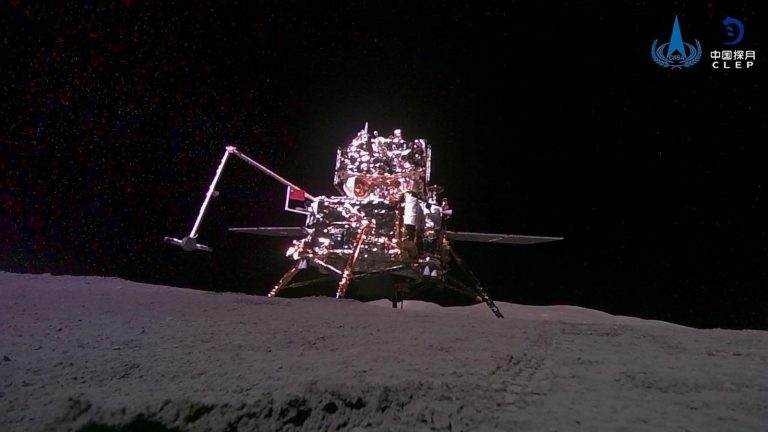CAPE CANAVERAL, Fla. — Soil and rocks returned from the moon’s mysterious far side suggest it may be drier than the side constantly facing Earth, Chinese scientists reported Wednesday.
But they cautioned more samples are needed for a clearer picture.
A better understanding of the abundance of water in the lunar mantle can help explain how the moon evolved, the researchers noted. But it could also be all the more reason for astronauts to stick close to the near side of the moon as currently planned.
China became the first country to land on the moon’s far side last year. The Chang’e 6 spacecraft scooped up the volcanic rock and dirt from the ancient, sprawling South Pole-Aitken basin, one of the largest impact craters in the solar system.
The Chinese Academy of Sciences’ Sen Hu said he and his team received 5 grams of soil samples, then selected 578 particles for detailed analysis using electron microscopes.
They estimated the water abundance at less than 1.5 micrograms per gram, on the dry end of what’s been found in samples gathered over past decades from the moon’s near side. Measurements on samples from the near side have ranged between 1 microgram and 200 micrograms per gram.
Given the limited sampling, it’s uncertain how widespread this dry condition might be, the scientists noted in their study published in the journal Nature.
“More far side samples are required for testing and further unraveling” how much water there is, Hu said in an email.
It’s possible the impact that created this basin may have blasted water elements to the near side, leaving the far side depleted. Another possibility is that the vertical distribution of water could be different between the two hemispheres.
Even if confirmed, the findings shouldn’t drastically alter NASA’s plans to send astronauts to the moon’s south polar region, where permanently shadowed craters are believed to hold massive amounts of ice. This frozen water could be used for drinking, cooking and making rocket fuel.
NASA aims to send four astronauts around the moon next year under its Artemis program, the successor to Apollo, which put 12 men on the moon from 1969 through 1972. That would be followed by a landing near the lunar south pole by astronauts no earlier than 2027. China is seeking its own astronaut moon landing by 2030.
___
The Associated Press Health and Science Department receives support from the Howard Hughes Medical Institute’s Science and Educational Media Group and the Robert Wood Johnson Foundation. The AP is solely responsible for all content.



